Purpose built in 1914, as the town’s main post office, this pub takes its name from the world’s first-ever adhesive postage stamp. When built, it was the town’s ‘largest liftable building’. ‘Liftable’ or timber-framed structures have been used in Northwich so that they can be jacked back into position, following subsidence.
Prints, illustrations and text about the Penny Post.
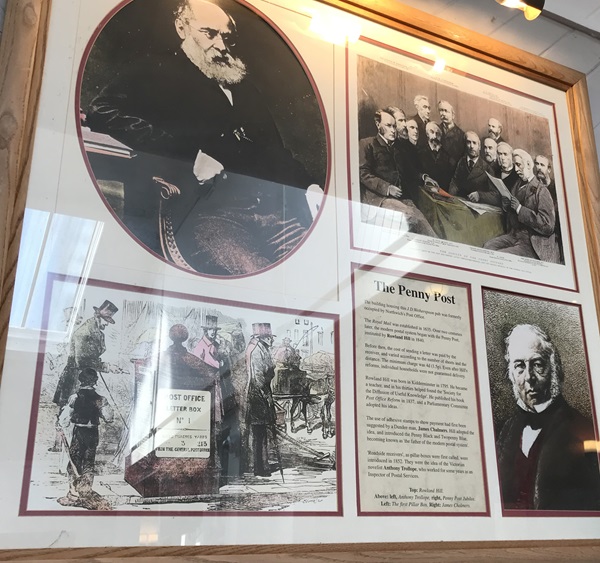
The text reads: The building housing this J D Wetherspoon pub was formerly occupied by Northwich’s post office.
The Royal Mail was established in 1635. Over two centuries later, the modern postal system began with the Penny Post, instituted by Rowland Hill in 1840.
Before then, the cost of sending a letter was paid for by the receiver, and varied according to the number of sheets and the distance. The minimum charge was 4d (1.5p). Even after Hill’s reforms, individual households were not guaranteed delivery.
Rowland Hill was born in Kidderminster in 1795. He became a teacher, and in his thirties helped found the Society for Diffusion of Useful Knowledge. He published his book Post Office Reform in 1837, and a Parliamentary committee adopted his ideas.
The use of adhesive stamps to show payment had first been suggested by a Dundee man, James Chalmers. Hill adopted the idea, and introduced the Penny Black and Twopenny Blue, becoming known as ‘the father of the modern postal system’.
‘Roadside receivers’, as pillar boxes were first called, were introduced in 1852. They were the idea of the Victorian novelist Anthony Trollope, who worked for some years as an inspector of postal services.
Top: Rowland Hill
Above: left, Anthony Trollope, right, Penny Post Jubilee
Left: The first pillar box
Right: James Chalmers.
Prints, an illustration and text about the salt tax.

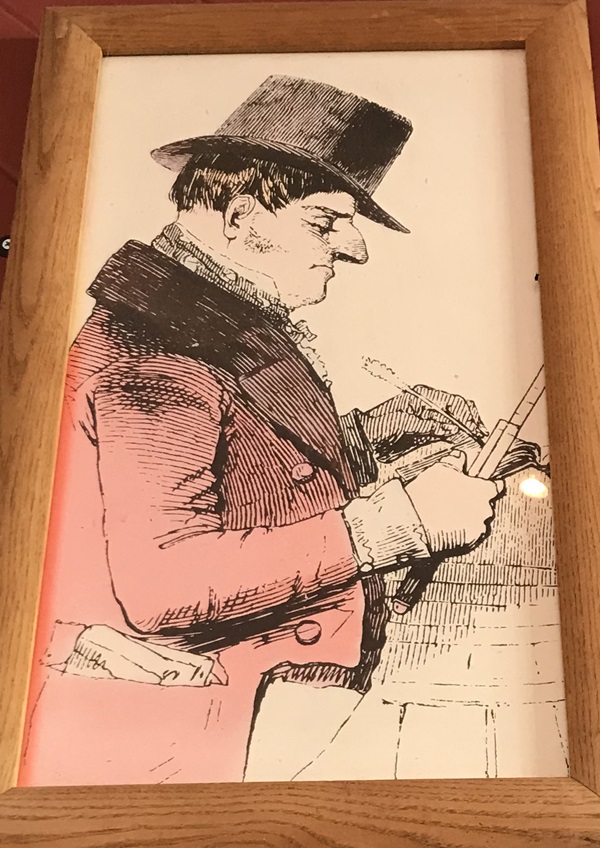
The text reads: Through the ages salt has been essential for preserving food, and since the days and the Romans it has also been a target for taxation.
The Domesday Book of 1086 recorded the salt taxes due to Hugh Lupus, Lord of the Manor of Northwich. Later, one cause of the French Revolution was the high rate of the ‘gabelle’, or salt tax. At that time the tax of salt here was some thirty times the cost of production.
More recently, an important part of Gandhi’s campaign of civil disobedience, which led to Indian independence, involved the flouting of the British salt monopoly.
The salt tax was paid on production. Small firms could not afford to tie up so much capital, and the trade became monopolised by a few large businesses. The latter supported the tax, but it was finally repealed in 1825.
Top: The Exciseman
Above: top, HJ Falk, director of the Salt Union.
A print and text about Sir John Brunner.
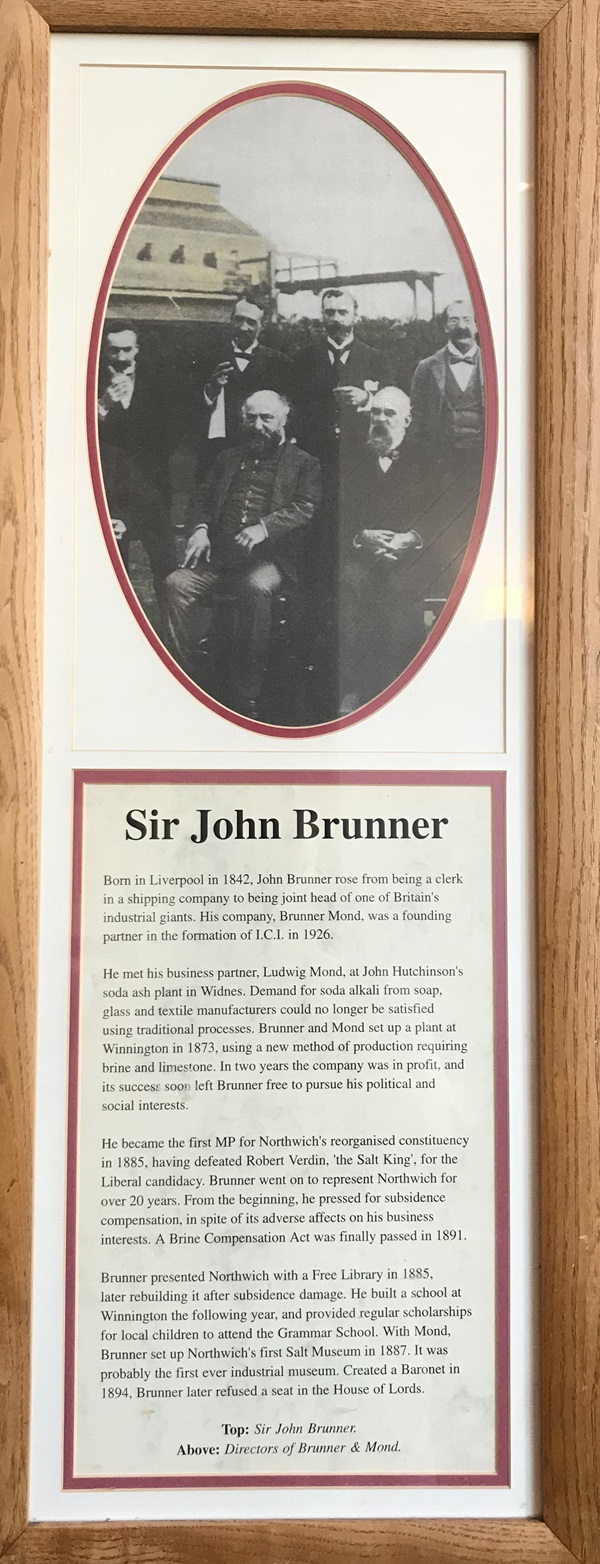
The text reads: Born in Liverpool in 1842, John Brunner rose from being a clerk in a shipping company to being joint head of one of Britain’s industrial giants. His company, Brunner Mond, was a founding partner in the formation of ICI in 1926.
He met his business partner, Ludwig Mond, at John Hutchinson’s soda ash plant in Widnes. Demand for soda alkali from soap, glass and textile manufacturer could no longer be satisfied using traditional processes. Brunner and Mond set up a plant at Winnington in 1873, using a new method or production requiring brine and limestone. In two years the company was in profit, and its success soon left Brunner free to pursue his political and social interests.
He became the first MP for Northwich’s reorganised constituency in 1885, having defeated Robert Verdin, ‘the Salt King’, for the Liberal candidacy. Brunner went on to represent Northwich for over 20 years. From the beginning, he pressed for subsidence compensation, in spite of its adverse effects on his business interests. A Brine Compensation Act was finally passed in 1891.
Brunner presented Northwich with a Free Library in 1885, later rebuilding it after subsidence damage. He built a school at Winnington the following year, and provided regular scholarships for local children to attend the Grammar School. With Mond, Brunner set up Northwich’s first Salt Museum in 1887. It was probably the first ever industrial museum. Created a Baronet in 1894, Brunner later refused a seat in the House of Lords.
Above: Directors of Brunner and Mond.
A print and Sir John Brunner.
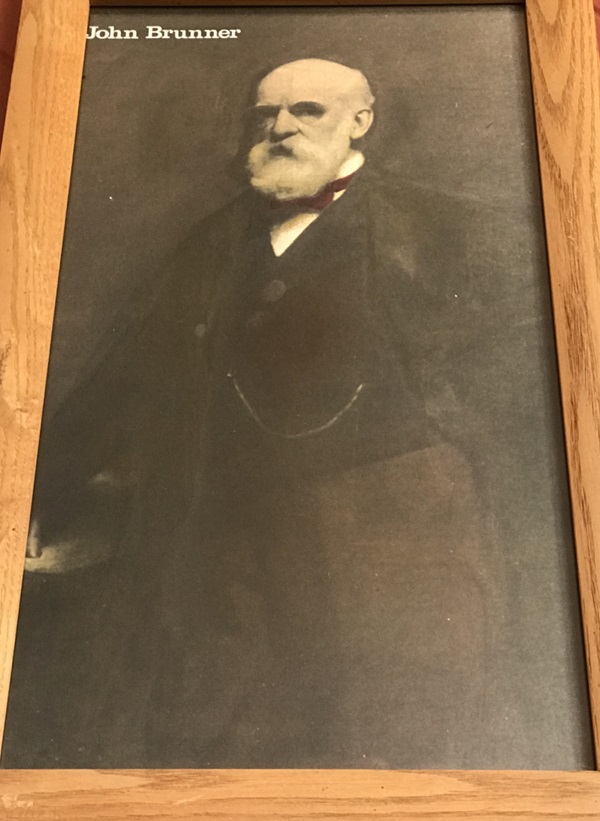
External photograph of the building – main entrance.
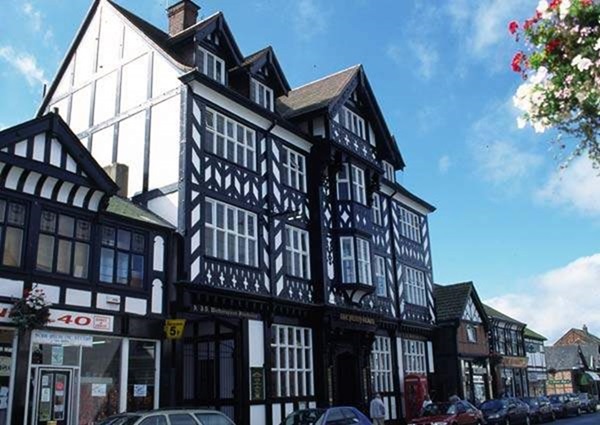
If you have information on the history of this pub, then we’d like you to share it with us. Please e-mail all information to: pubhistories@jdwetherspoon.co.uk